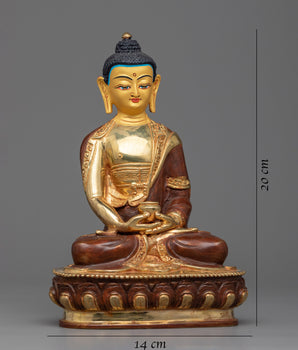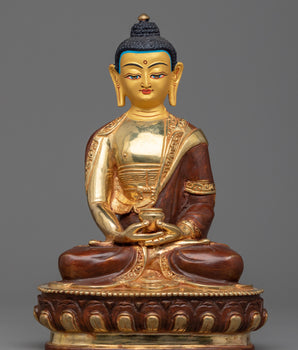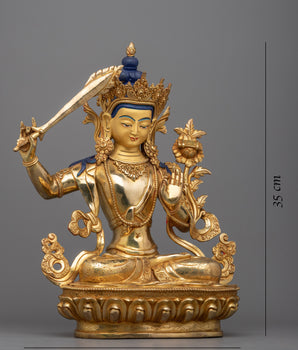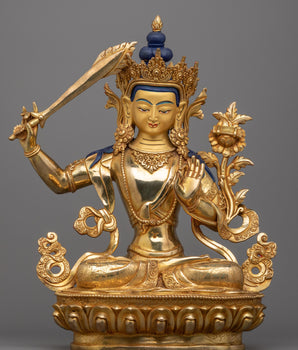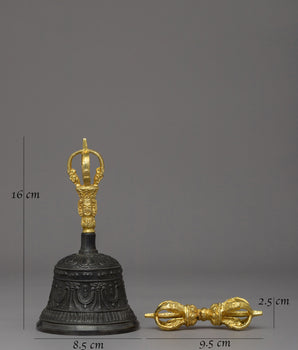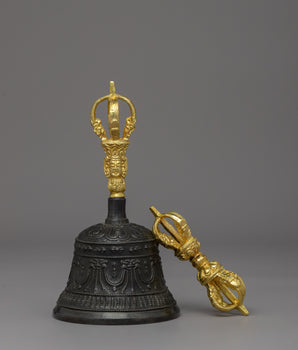The Thunderous Deity Who Commands Nature's Fury
Raijin is recognized as the supreme god of thunder, lightning, and storms in Japanese mythology. Translated as the 'Thundersky God,' his name asserts his dominance over the mentioned before elements. Always portrayed together with drums, he is popular for what most people believe are drumsticks that he uses to produce thunder.
In Japan, Raikou, a resident demon, typically appears as a lightning god who accompanies Fujin, the wind god. His further significant work depicts the triumph of the lovers, symbolizing the stories and the arts of creation and fertility. Whereas, as a protector and destroyer, Raijin mentions only the overpowering force, the strength, and the shame of living in a world of natural forces we must learn to obey. The man and his work continue to endure, captivating and influencing us.
Origins of Raijin in Japanese Mythology
Popular in Japanese mythology as the god of thunder, Raijin is a divine force responsible for storms, lightning, and thunder. The meaning of the names Rai Jin consists of the ‘rai’ – thunder, and ‘jin – god reflecting his authority over all those aspects. Kaminari is one of the most well-known gods, similar to the gods who rule and govern natural and societal phenomena.

People believe that he was born to Izanami and Izanagi, the two deities responsible for creating Japan's generation of islands. The background of seven deities is both mournful and redemptive—the divine powers created him, yet his mother, Izanami, could not survive childbirth. This is because, while the storms he commands have the power to destroy, they also have the ability to nourish the earth after their destruction.
The part of Raikou belongs to the mythological world, which is based on the cult of power, storms, and thunder, which we can confront and recall as the power of a natural phenomenon. Artworks depict, death, and the powers that control existence.
Raijin’s Iconography and Symbols
Raijin’s iconography includes swirling clouds, the vajra, and a muscular form, symbolizing his control over storms, thunder, and lightning.
1. Thunder and Lightning

Raijin is most commonly depicted holding vajra, symbolizing his control over thunder and lightning. The vajra, a diamond-like scepter, not only signifies his immense power but also his ability to unleash storms with divine precision.
2. Fierce Appearance
Often shown with a muscular, fearsome form, emphasizing his strength and dominion over storms. His robust physique is not just an artistic choice but a deliberate symbol of the immense power he holds over nature.
3. Storm Clouds

The god is frequently surrounded by swirling clouds, reinforcing his association with violent storms and lightning strikes. These ominous clouds are not just background details but symbolic representations of the thunderous weather that Raijin commands.
4. Muscular Build:

He is typically shown in a muscular build, showcasing his immense strength and physical power. muscular figure highlights not only his raw physicality but also his role as a fierce and commanding deity of storms and thunder.
Timeless Lessons from Japanese Mythology
Raijin, the god of thunder, offers profound lessons through his mythology that resonate with both ancient and modern audiences. His role as deity of storms teaches us about the power of nature and the importance of respecting natural forces. In many ways, he represents the balance between creation and destruction, reminding us that destructive forces, like thunderstorms, are also essential for rejuvenating and nourishing the earth. His storms bring rain, which is vital for crops and survival, demonstrating the dual nature of power—both dangerous and life-sustaining.
Furthermore, Raijin's relationship with his counterpart, Fujin, the god of wind, highlights the importance of balance and cooperation. Just as their complementary forces work in harmony to shape the world, the mythology of Raijin teaches us the value of working together with others and finding balance in life’s challenges.
Lastly, Raijin's fierce yet protective nature offers a reminder of the strength we can find in adversity. his imagery fosters resilience in the face of hardships, as his storms serve not only as a source of fear but also as a catalyst for renewal and cleansing. Through Raikou's mythology, we learn to respect nature, embrace balance, and find strength in adversity.
Raijin and Fujin: A Dynamic Duo in Mythology
Among all the deities of the Shinto pantheon, Raijin and Fujin are more easily recognizable because they are the symbols of the most powerful nature phenomena: thunder and wind, respectively. His name means ‘thunder’ and the character with which he is associated is lightning, whereas Fujin is the god of wind and has a shoulder bag with winds in it to dictate the shape of the sky. Indeed, both the primary and wild forces contribute to the sustenance of humanity and aid in the development of challenges.
The strengthening of the relations between Raijin and Fujin underscores Japan's existence in history. ‘During the Mongol invasion in the 13th century, powers of both were said to have raised the ‘kamikaze, or divine winds, which were credited for the sinking of Mongol fleets and saving the Japanese islands from Omor conquest.’ This mythology connected their names to the nation's protection and the power of nature.
However, the arts place both deity as gods with evil looks who protect temple gates. This symbol of their existence in Japanese culture and mythology shows that the beneficial and evil forces and the wellsprings of life are in perfect balance and has provoked the imagination of storytellers and artists for centuries.
Cultural Festivals and Modern Worship of Raijin
This blog specifically focuses on the investigations of Raijin, the god of thunder, and how he touches present-day Japan in cultural festivals as well as religion. Various types of matsuri, primarily honoring the power of nature and offering shelter from storms, honor kaminari-sama. These ceremonies are commonly associated with such forms of art as drum dancing, which appeals to the attributes of Raiden-sama, the Shinto god of thunder.
Tokyo hosts the Kanda festival, where people worship Raijin and other deities. In order to win over these gods, participants make prayers of harvest and against catastrophes such as floods. Similarly, devotees seek protection from accidents and prosperity in their businesses at shrines associated with Raikou, such as the Yasaka shrine in Kyoto.
Later, Raijin emerged as a powerful icon distinctly separated from the religious implications that were originally associated with this character. The essence of Raijin's imagery has permeated various aspects of popular culture, including tattoos and graphic art, ensuring his legacy endures for future generations. The cultural respect for the deity, which honors both the destructive and constructive power of nature, remains astounding to this day. In sculpture and fairs as well as in modern manifestations, he remains a symbol of human-animal and human-nature symbiosis.
To call the attention of the Japanese inhabitants to the importance of the practical mastery of civility and proper etiquette in relation to nature,Kaminari, or the god of thunder, was depicted as an important icon of Japanese culture. Raijin, best known for his mastery over thunder and storms, is associated with both the death and rebirth aspects of both natural and divine powers. Farmers often prayed to Raikou for rain, a necessity for crops, and perceived him as compassionate, similar to a provider, despite his representation as a thunder god.
In mythology, Raijin also possesses the element of a guardian who combats evil spirits and protects people’s settlements. Art and temple walls depict him, strongly identifying him with the drums and drumsticks. Thus, recognizing tradition, Raijin has become associated with popular today’s cultures such as anime, video games, and others; in most of the cases, he symbolizes strength and perseverance. His reverence for nature's power, protection, and balance shows Japan's cultural empathy with nature.
A Powerful Force in Art and Literature
Japanese art, literature, and folklore depict Raijin as a formidable god. he is depicted in detail, particularly in prints depicting gods of the wind, usually accompanied by Iwatoggle, and Hokusai is well known for this traditional Japanese artwork. Many of these depictions portray him as both a destructive and protective force. Some mythological literature portrays the deity as a god who symbolizes harmony and the forces of both creation and destruction. He left his legacy in Japanese culture and spirituality through his association with both art and tales.
Raijin’s Influence Beyond Japan
As a highly populous country with global connections, Raijin maintains a complex connection with various cultures that govern the arts, both mythologically and artistically, as well as in media. As one of the most renowned god-related figures in Japanese mythology, his iconography has found diverse applications worldwide. Characters based on Raijin are featured in many popular, populated fictions; they are powerful, destructive, and represent divine retribution.
The world's acceptance of Japanese culture also reflects Raikou, who has counterparts to thunder deities from other cultures, such as Thor in the Legend of the Northern Peoples. Moreover, in modern culture, he has also moved to symbolize forces of nature and storms and the concept of order and protection. This cross-cultural existence provides Raijin with an immortal cultural identity of the elements of power and protection.
Enduring the Legacy of The Thunder God
Japanese mythology, the world of art, and today's technologies and media firmly implement the masculinity and mysterious power of Raijin, which remain intriguing to this day. This is not a tale of a god controlling the storms, but rather a tale of a god imparting prevailing principles and navigating the conflict between order and chaos, unity and division, and power amidst adversity. he is the god who gives people food, directly responsible for nourishing them and shielding them from harm; in an overall sense, the god represents the life force—its onslaughts and its miracles. In contemporary culture, the ancient god has become a symbol of strength, endurance, and the power of nature, personified in computer games, cartoons, and paintings. They admired him from the thunder drum, which was signature to his iconography, down to the storm clouds. Ultimately, Raijin’s enduring legacy reflects a deep respect for nature’s forces and the timeless lessons they offer humanity—making him a symbol of both reverence and resilience.






